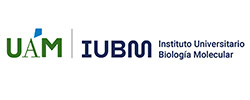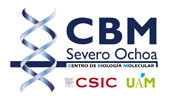Yeast enzymes bioengineering to generate bioactive compounds
Prof. María Fernández Lobato. Catedrática. Departamento de Biología Molecular. UAM.
Prof. Miguel Remacha Moreno. Catedrático. Departamento de Biología Molecular. UAM.
We work with microorganisms producing bioactive compounds for application in functional and nutraceutical food. We try toconnectthe generation of knowledgeto the developmentof biotechnological applications. Basically,we focus onthe characterization of enzymes producing new compounds, the analysis of their structural-functional determinants, their operationalimprovementusingmolecularbiology tools, the characterizationof the new molecules produced and the evaluation of their potential biological activity. We have designedmethodsto simplify protocols as the biocatalysts attachment tosolid supports.
During the last years we have continued with the characterization and study of proteins from non-conventional yeast (included in genera as Rhodotorula and Metschnikowia) showing glycosyltransferase activity, applicable in the production of new heterooligosaccharides and glycoconjugate derivatives (basically glycosylated polyphenols) that may have prebiotic or antioxidant properties. We have also characterized new fungal chitinases that can hydrolyze different chitinolytic materials, waste from the industrial activity, to generate chitooligosaccharides with promising bioactive properties. In general, most of the characterized proteins are glycosyl hydrolases (GH) structurally included in families GH32, 31, 13 or 18. In fact, we resolved the 3D structure of the first yeast protein including in family GH32, assigned a function to the beta-sandwich domain that is present in all members of this family and proved that the oligomerization is directly involved in the substrate recognition and specificity. Recently we have found that some of the characterized enzymes can glycosylate compounds with aromatic rings such as hydroxytyrosol or phloretin, which confers them a special biotechnological interest. We have obtained numerous variants of enzymes that increase or alter the pattern of biosynthetic products. Isolated and characterized the formed products and optimized the biosynthetic reactions. We intend to extend our study to hydrolases including in other structural families, to increase and modify the transferase/biosynthetic activity of the enzymes studied, to scale up to industrial level the enzyme production and the products generated, as well as to validate the biological activity of the molecules obtained. Objectives included in those of the Glicoenz consortium (http://www.glicoenz.org/p/glicoenz.html).


